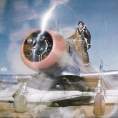Does The Mooney Wing Tank Hide Water?
-
Members Online
- SkyBound
- Bryan G
- hoot777
- affricate
- Rmnpilot
- Guy123
- LANCECASPER
- Losbright1
- Rogerg
- Ricky_231
- Rwsavory
- TerminalSpeed
- christaylor302
- AviH
- Zulee
- Rmfriday
- RangerM20
- DanM20C
- eman1200
- Fly Boomer
- PMcClure
- jamesyql
- warren.huisman
- Danb
- ProtoFly
- wolfbyte
- Q The Engineer
- AMG880
- Boboli
- SARNorm
- N201MKTurbo
- 802flyer
- jwarren2


Recommended Posts
Join the conversation
You can post now and register later. If you have an account, sign in now to post with your account.